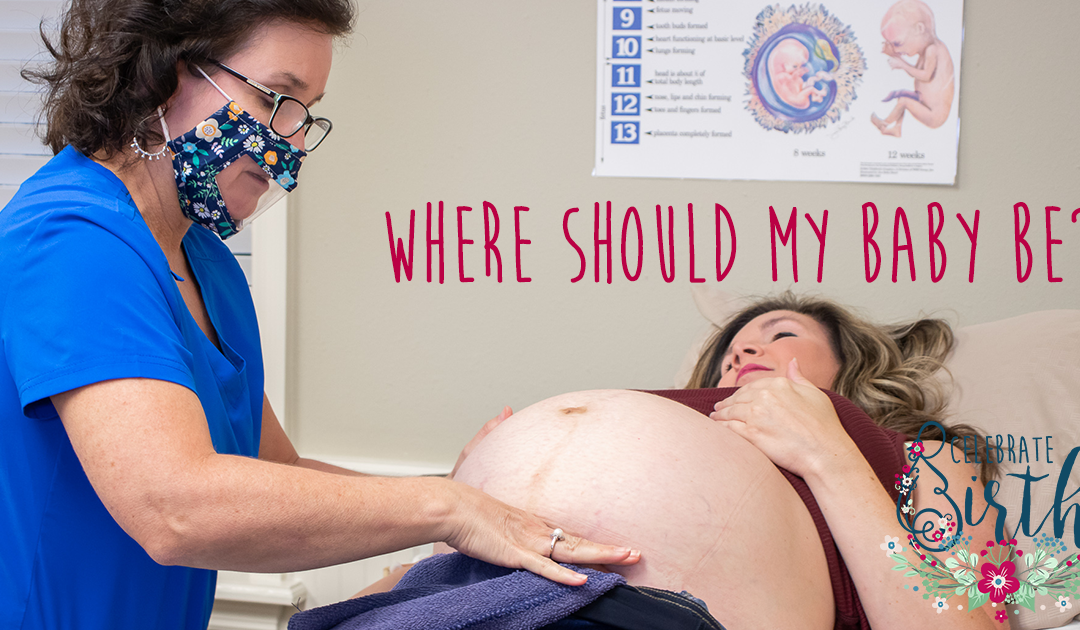Where Should My Baby Be? (What Fetal Positions are Midwives Looking for Throughout Pregnancy)
At first, you may not put too much thought into the different positions of your baby in utero, but soon it will become an important factor that is most often discussed during your third trimester. There are many different positions a baby can be in that are safe and normal as your estimated due date nears. Furthermore, knowing your baby’s position during early labor can help you manage your progress throughout the process and help you understand why and where certain discomfort might be occurring. For example, if your baby is posterior, using counterpressure techniques can help with the back pain that you will most likely be experiencing. Your care provider will also be acutely aware of your baby’s position during labor, as this is key to lowering the risk of complications during delivery.
A baby will summersault in many different positions throughout the pregnancy, but as they grow bigger and the estimated due date draws closer, they will have less room to move around – this is why it is important for them to be in a favorable position for delivery before they run out of space to do so. So what positions are midwives looking for towards the end of pregnancy? Let’s break it down!
What We Look For
Ideally, the baby should be in a head-down position, facing the mother’s back as she gets closer to the end of the pregnancy. Around the 30-week mark is when we will start palpating the belly to determine if the baby is in this anterior position. We’ll feel for the long flat surface of their back and then the soft curve of their bottom; this will tell us exactly which direction the baby is laying. Usually, babies prefer to lie in this anterior position, leaning a little bit to either the left or right side. However, some babies decide to be “sunny side up” in a posterior position, facing the mother’s front. Posterior babies are not a cause for concern, but they do sometimes present unique challenges with the baby’s descent.
Unfavorable Positions
Babies are usually born from a head-down position without any problems; however, if a baby is in the transverse or the breech position it can be a cause for serious concern. The transverse position is where the baby lies diagonally or horizontally in the uterus. This makes it more likely that a shoulder will enter the pelvis first. Breech is when a baby is in a bottom-first or feet-first position. If they are in one of these positions, there are things we can do to try to correct the position during the final weeks of pregnancy, but unfortunately, there is no guarantee we can do so. Some babies are stubborn and want to stay comfortable the way they are! If a baby is in the transverse or breech position during labor, the mother will need to deliver in the hospital.
Ways to Help During Pregnancy
It is not always possible to turn your baby, but here is a list of some natural techniques we have suggested to help our mothers during pregnancy.
- Exercise – Yoga exercises like tabletop, downward-facing dog, and puppy pose, as well as inversion tilts are great ways to stretch and move your baby.
- Chiropractic Care – Chiropractic care can help loosen ligaments that might be tight and keeping the baby in an unfavorable position.
- Acupuncture – Acupuncture can help reduce stress and relax tight muscles that might be preventing your baby from turning.
- Swimming Pools – Swimming can help relax tight muscles as well and being underwater can feel like it affects the baby’s buoyancy in the womb. Many women have reported that doing repeated handstands in the pool helped their baby to turn.
- Ice Packs – Placing ice packs on top of the belly where the baby’s head is located might encourage them to turn away.
- Talking to Baby – We encourage our dads to talk to their baby to encourage them to move toward them, which is also great quality time for everyone!
- Music – Some have recommended playing irritating music to coax the baby away from it and to a quieter location in the womb.
- External Cephalic Version – This is an external manipulation to turn the baby downward, which is only done under strict medical supervision to ensure safety for all.
It is important to note that most babies turn head-down on their own. In fact, at Celebrate Birth, 90% of our clients deliver under our care. Our midwives are highly trained, experienced, and able to quickly identify and manage any situation which is outside the normal spectrum of pregnancy and birth, including managing the many positions a baby might settle into.

